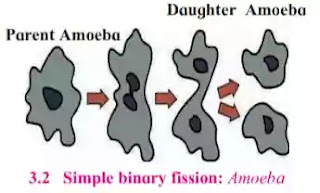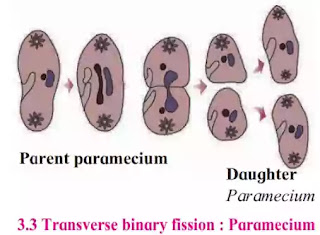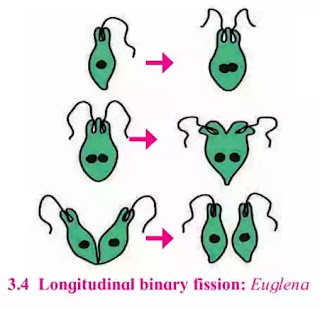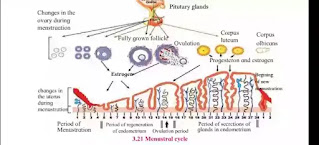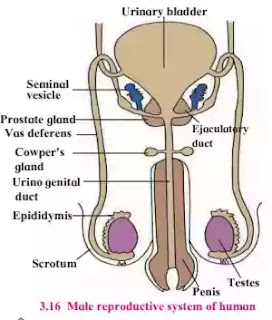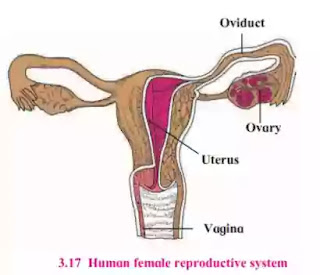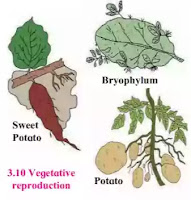Solutions for Class 10 Science Chapter 3 – Life Processes In Living Organisms Part 2 Exercise
Life processes in living organisms part -2 chapter 3 Exercise Answers :
Students can refer to the following Life processes in living organisms part -2 chapter 3 textbook solutions for class 10 Science provided below based on the latest curriculum and examination pattern issued by Maharashtra state board. Our subject experts have prepared these questions and answers for class 10 students. which covers all topics from your textbook so that students can assess themselves on all important topics and thoroughly prepare for their board exams.
We have provided below Life processes in living organisms part -2 chapter 3 class 10 notes Science with answers which will help the students to go through the entire syllabus and and practice textbook questions and answers provided here with solutions. You can download in Pdf Format and score high in your board exam you should go thorough all Life processes in living organisms part -2 chapter 3 Class 10 solutions provided below so that you are able to get more marks in your exams.
Important points to Remember about Life Processes in living organisms
- Process of formation of new organism by an organism of same species without involvement of gametes is called as asexual reproduction.
- The process in which the parent cell divides to form two similar daughter cells is binary fission.
- IVF means In Vitro Fertilization (IVF)In this technique, fertilization is brought about in the test-tube and the embryo formed is implanted in uterus of woman at appropriate time.
- Female reproductive system undergoes some changes at puberty and those changes repeat at the interval of every 28 – 30 days. These repetitive changes are called as menstrual cycle.
- Follicle stimulating hormone and ICSH or Luteinizing hormone secreted by pituitary gland, testosterone secreted by testis.
- Sexual reproduction involves the fusion of two types of gametes i.e., the male and the female gametes.
- Plants reproduce sexually with the help of flowers.Androecium and gynoecium are male and female parts of the flowers respectively.
- The man is totally responsible, whether the couple will have a boy or a girl child
Class 10 Science Chapter 3 Life Processes in Living Organisms Part 2 Solutions :
1. Complete the following chart.
| Asexual reproduction | Sexual reproduction |
|---|---|
| Reproduction that occurs with the help of somatic cell is called as asexual reproduction | |
| Male and female parent are necessary for sexual reproduction | |
| This reproduction occurs with the help of mitosis | |
| New individuals formed by this method is genetically different from Parents. | |
| Asexual reproduction occurs in different individual’s by binary fission, multiple fission, budding, fragmentation, regeneration, vegative propagation, spore production etc |
Answer :
| Asexual reproduction | Sexual reproduction |
|---|---|
| Reproduction that occurs with the help of somatic cell is called as asexual reproduction | Reproduction that occurs with the help of germ cells is called as sexual reproduction |
| Both the parents are not required For asexual reproduction it is uniparental | Male and female parent are necessary for sexual reproduction |
| This reproduction occurs with the help of mitosis only | This reproduction occurs with the help of both meiosis and mitosis |
| New individuals formed by this genetically identical to parents | New individuals formed by this genetically different from parents |
| Asexual reproduction occurs different individual’s by various methods like binary fission, multiple fission, budding, fragmentation, Regeneration, spore production etc | Sexual reproduction occurs in various organism like microbs, plant, animal and human it’s involved two main process of gametes formation and fertilization . |
2. Fill in the blanks.
a. In humans, sperm production occurs in the organ —————-.
b. In humans, —— chromosome is responsible for maleness.
c. In male and female reproductive system of human, ————- gland is same.
d. Implantation of embryo occurs in ——e. ———- type of reproduction occurs without fusion of gametes.
f. Body breaks up into several fragments and each fragment starts to live as a new individual. This is — — — — — — — type of reproduction.
g. Pollen grains are formed by — —– — — — division in locules of anthers.
Answer:
a.In humans, sperm production occurs in the organ testes.
b. In humans, Y chromosome is responsible for maleness.
c. In male and female reproductive system of human, bulbourethral gland is same.
d. Implantation of embryo occurs in uterus.
e. Asexual type of reproduction occurs without fusion of gametes.
f. Body breaks up into several fragments and each fragment starts to live as a new individual. This is fragmentation type of reproduction.
g. Pollen grains are formed by meiotic division in locules of anthers.
Q3. Complete the paragraph with the help of words given in the bracket.(Luteinizing hormone, endometrium of uterus, follicle stimulating hormone, estrogen, progesterone, corpus luteum)
Growth of follicles present in the ovary occurs under the effect of —– This follicle secretes estrogen. — — – — — — grows / regenerates under the effect of estrogen. Under the effect of — —, fully grown up follicle bursts, ovulation occurs and — — — — is formed from remaining part of follicle. It secrets —
— — — and — — — — –. Under the effect of these hormones, glands of — —
— — are activated and it becomes ready for implantation.
4.Answer the following questions in short.
a. Explain with examples types of asexal reproduction in unicellular organism.
Answer: Process of formation of new organism by an organism of same species without involvement of gametes is called as asexual reproduction. There are different methods of asexual reproduction in different unicellular animals.
1. Binary fission: The process in which the parent cell divides to form two similar daughter cells is binary fission. It takes place either by mitosis or amitosis. When there are favourable conditions and abundant food supply then the organisms undergo binary fission. Prokaryotes, Protists and eukaryotic 5 cell-organelle like mitochondria and chloroplasts perform binary fission. Based on axis of fission there are three subtypes of binary fission.
(a) Simple binary fission: The plane of division is not definite, it can be in any direction due to lack of specific shape as in Amoeba.
(b) Transverse binary fission: The plane of J division is transverse, as in Paramoecium.
(c) Longitudinal binary fission: The plane of division is in length-wise direction as in Euglena.
2. Multiple Fission
Asexual reproduction by multiple fission is performed by Amoeba and other similar protists. Amoeba stops the formation of pseudopodia and thereby movements whenever there is lack of food or any other type of adverse condition. It becomes rounded and forms protective covering around plasma membrane. Such encysted Amoeba or any other protist is called as ‘Cyst’.Many nuclei are formed by repeated nuclear divisions in the cyst. It is followed by cytoplasmic division and thus, many amoebulae are formed. They remain encysted till there are adverse conditions. Cyst breaks open on arrival of favorable conditions and many amoebulae are released.
3. Budding
In this method, a bud develops as an outgrowth from parent body. This developing bud detaches from the parent body and the daughter individual develops further. For example, yeast reproduces asexually through the method of budding. During this process, small bulb-like projections (called buds) start coming out of the yeast cell. These buds gradually grow in size and get detached from the parent cell to form a new yeast cell. The new yeast cell then grows and becomes mature to form more yeast cells.
b. Explain the concept of IVF.
Answer:
- IVF means In Vitro Fertilization (IVF)
- In this technique, fertilization is brought about in the test-tube and the embryo formed is implanted in uterus of woman at appropriate time.
- IVF technique is used for having the child in case of those childless couples who have problems like less sperm count, obstacles in oviduct, etc.
c. Which precautions will you follow to maintain the reproductive health?
Answer: Occurrence of menstrual cycle is related with reproductive and overall health of women. Now a day, women are working at par with men. Due to this, they have to stay outdoors for whole day. Bleeding occurs during menstrual cycle. Due to this, private organs (genitals) need to be maintained clean time to time, otherwise, problems regarding reproductive health may arise. Some problems regarding reproductive health may arise in men too. It is essential to maintain the cleanliness of their genitals.
d. What is menstrual cycle? Describe it in brief.
Answer.
- Female reproductive system undergoes some changes at puberty and those changes repeat at the interval of every 28 – 30 days. These repetitive changes are called as menstrual cycle.
- Menstrual cycle is a natural process, controlled by four hormones. Those four hormones are follicle stimulating hormone (FSH), luteinizing hormone (LH), estrogen and progesterone.
- One of the several follicles in the ovary starts to develop along with the oocyte present in it, under the effect of follicle stimulating hormone.
- This developing follicle secretes estrogen. Endometrium of the uterus starts to develop (during first cycle) or regenerate (during subsequent cycles) under the effect of estrogen. Meanwhile, developing follicle completes its development. It bursts under the effect of luteinizing hormone and oocyte is released. This is called as ovulation.
- Remaining tissue of the burst follicle forms the corpus luteum.
- Corpus luteum starts to secrete progesterone. Endometrial glands secrete their secretion under the effect of progesterone. Such endometrium is ready for implantation of embryo.
- If oocyte is not fertilized within 24 hours, corpus luteum becomes inactive and transforms into corpus albicans. Due to this, secretion of estrogen and progesterone stops completely. Endometrium starts to degenerate in absence of these two hormones.
- Tissues of degenerating endometrium and unfertilized ovum are discarded out through vagina.
- This is accompanied with continuous bleeding. Bleeding continues approximately for five days. This is called as menstruation.
5. In case of sexual reproduction, newborn show similarities about characters. Explain this statement with suitable examples.
Answer: Sexual reproduction involves the fusion of two types of gametes i.e., the male and the female gametes. The zygote formed contains a fusion of both the sperm nucleus and the egg nucleus. Due to this, the new individual has characteristics which are similar to both the parents while some characteristics which are different from both the parents. Thus, the new individual formed from sexual reproduction inherits the characteristics of both the parents. For example, if the father has black hair while the mother has brown hair, the chances are that their offspring may have either black or brown hair.
6. Sketch the labeled diagrams.
a. Human male reproductive system.
Answer:
b. Human female reproductive system.
Answer :
c. Flower with its sexual reproductive
organs.
Answer :
d. Menstrual cycle.
Answer:
7. Give the names.
a. Hormones related with male reproductive system.
Answer : Follicle stimulating hormone and ICSH or Luteinizing hormone secreted by pituitary gland, testosterone secreted by testis
b. Hormones secreted by ovary of female reproductive system.
Answer : estrogen and progesterone
c. Types of twins.
Answer : Monozygotic and dizygotic twins
d. Any two sexual diseases.
Answer : Gonorrhea and Syphilis.
e. Methods of family planning.
Answer : Copper T, condoms, oral contraceptive pills
8. Gender of child is determined by the male partner of couple. Explain with reasons whether this statement is true or false.
Answer :
- The man is totally responsible, whether the couple will have a boy or a girl child.
- During zygote formation, man contributes either X or Y chromosome to the next generation But females transfer only X-sex chromosome to the next generation. At the time of fertilization,
- if X-chromosomes comes from male, the child will be a girl and if Y-chromosomecomes then the child will be a boy.
9. Explain asexual reproduction in plants.
Answer :
- Vegetative Propagation: Reproduction in plants with the help of vegetative parts like root, stem, leaf and bud is called as vegetative reproduction.
- Vegetative propagation in potatoes is preformed with the help of ‘eyes’ present on tuber
- whereas in Bryophyllum it is performed with the help of buds present on leaf margin.
- In case of plants like sugarcane & grasses, vegetative propagation occurs with the help of buds present on nodes.
- Plants like carrot and radish perform vegetative propagation with the help of roots.
10. Modern techniques like surrogate mother, sperm bank and IVF technique will help the human beings. Justify this statement.
Answer : Many couples cannot have children due to various reasons. In case of women, irregularity in menstrual cycle, difficulties in oocyte production, obstacles in the oviduct, difficulties in implantation in uterus and many other reasons are responsible for this. Absence of sperms in the semen, slow movement of sperms, anomalies in the sperms are the reasons in case of males. But now with the help of advanced medical techniques like IVF, Surrogacy, Sperm bank the childless couples can have a child.
In Vitro Fertilization (IVF)
In this technique, fertilization is brought about in the test-tube and the embryo formed is implanted in uterus of woman at appropriate time. IVF technique is used for having the child in case of those childless couples who have problems like less sperm count, obstacles in oviduct, etc.
Surrogacy
Some women have problems in implantation of embryo in uterus. Such women can take the help of the modern remedial technique called as surrogacy. In this technique, oocyte is collected from the ovary of the woman having problem in in implantation in uterus. That oocyte is fertilized in test-tube with the help of sperms collected from her husband. The embryo formed from such fertilization is implanted in the uterus of some other woman having normal uterus. Such a woman, in whose uterus the embryo is implanted, is called as surrogate mother.
Sperm Bank/ Semen Bank
There are various problems in sperm production as mentioned above, in case of many men. So as to have the children in case of such couples, new concept of sperm bank has been introduced. This concept is similar to blood bank. Semen ejaculated by the desired men is collected after their thorough physical and medical check-up and stored in the sperm bank As per the wish of needful couple, oocyte of woman of the concerned couple is fertilized by IVF technique using the semen from sperm bank. Resultant embryo is implanted in the uterus of same woman. Name of the semen donor is strictly kept secret as per the law.
11. Explain sexual reproduction in plants
Answer :
- Plants reproduce sexually with the help of flowers.Androecium and gynoecium are male and female parts of the flowers respectively.
- In the carpel, the ovule undergoes meiosis and forms embryo sac.A haploid egg cell and two haploid polar nuclei are present in each embryo sac.
- The pollen grains from the anther reach the stigma of flower by the process of pollination. They germinate here on the stigma.As a result of germination, long pollen tube and two male gametes are formed.
- The pollen tube travels through the style of flower and the male gametes present in the pollen tube are transferred till the embryo sac in ovary. Upon reaching there, tip of the pollen tube bursts releasing two male gametes in embryo sac.
- One male gamete unites with the egg cell and forms zygote. While other male gamete unites with two polar nuclei forming the endosperm.Because there are two nuclei participating in this process, therefore it is called double fertilization.
- After fertilization ovule develops into seed and ovary forms a fruit. When the seed again gets favourable conditions, it can produce a new plant

